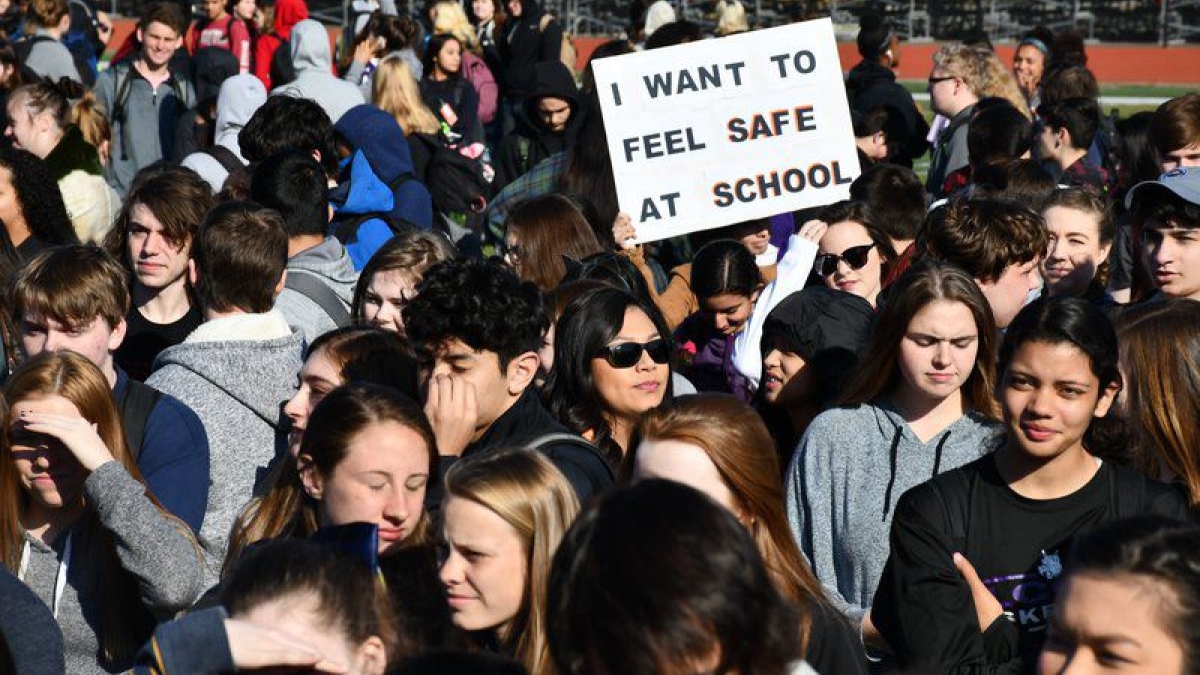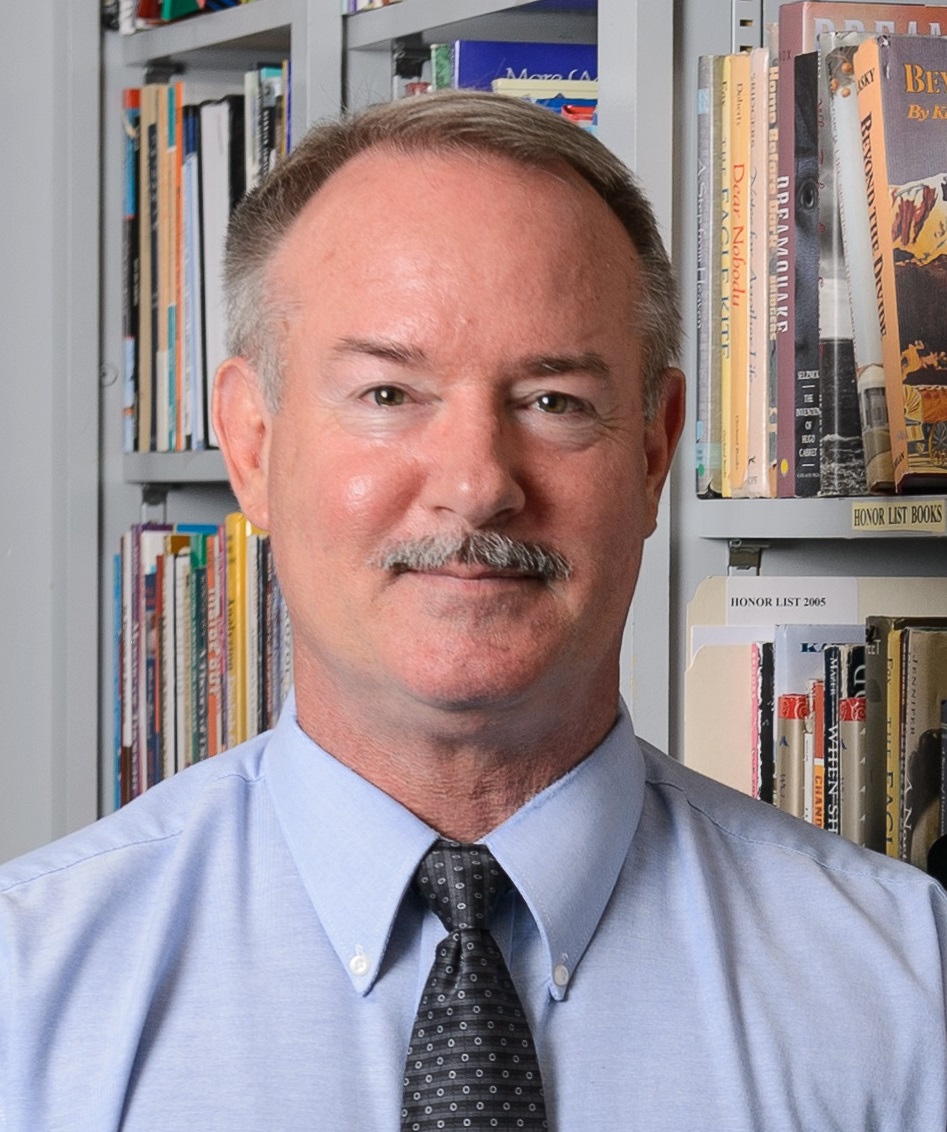Editor's note: This is part of a series investigating gun violence from many angles.
Arizona State University English Professor James Blasingame strongly believes that books are a “roadmap to life” for young adults that can be used to explore the causes and impact of teen violence and school shootings.
That’s why he’s devoting time to developing a curriculum for young adult readers so that educators and students can have a dialogue on issues such as gun control, bullying, mental health and school climate.
Blasingame, who is also the executive director of the Assembly on Literature for Adolescents of the National Council of Teachers of English, recently spoke to ASU about his research and work on real-life trauma and keeping schools safer.
James Blasingame
Question: What led you down this curriculum path on school shootings?
Answer: It began with a book launch for ASU alumni Tom Leveen’s new book “Mercy Rule,” the story of events leading up to a fictional high school shooting. Reading “Mercy Rule” inspired me (A) to go to ASU’s active-shooter training, and (B) to start researching possible ways to avert these tragedies. I looked at federal studies of 37 active-shooter events in schools published years ago to help communities across the country to formulate policies and strategies aimed at preventing school-based attacks. I also compared the facts to Leveen’s book and found 57 plot details that accurately reflected the causes, warning signs and "PAIN," pre-attack indicators, reported by the FBI, Secret Service and Department of Education.
Further investigation revealed a study conducted by Jill Ellen Hathaway, a graduate student at Iowa State University, “Using Young Adult Literature to Explore the Causes and Impact of Teen Violence.” Hathaway found that the critically acclaimed young adult novels accurately depicted “causes, effects, and warning signs of (school) violence,” and that high school readers had no problem identifying these key elements as they read. Hathaway suggested teachers use modern young adult literature “to open a much-needed dialogue with their students about social issues that are relevant to teens today” in addition to traditional studies of the literary canon.
Q: What’s a good age for students to start having a dialogue on this issue?
A: Discussions about serious issues like school shootings should come when young people reach the appropriate emotional/psychological maturity level to engage with the topic. I estimate that to be around the time they enter high school. I was recently invited to speak with a group of high school students whose leader said they were troubled by this issue and wanted to talk about it. In general, I believe we owe it to kids before they actually experience these issues to “provide them with weapons,” as Sherman Alexie says, to arm them against dangers that might otherwise ambush them. As authors Chris Crutcher (“Whale Talk”, “Period 8”) and Katherine Paterson (“Bridge to Terabithia”, “Jacob Have I Loved") have explained often, we want young people to experience life’s problems first in their reading so they have a chance to process it from the safe distance of literature: Forewarned is forearmed.
Q: You are currently conducting a study with 18 authors of young adult books about school shootings with the goal of finding out some takeaways from the readers. Any interesting insights?
A: After analyzing about 100 emails sent to authors by readers and forwarded to me with identification removed, I can share a few significant facts and recurring themes [on a variety of books]:
- In one case in which a middle school shooting was averted because students alerted the faculty/administration, school officials concluded that reading “Give a Boy a Gun” played a big role in students understanding the importance of warning school officials immediately. One of the most shocking facts in the federal studies was that students usually knew something was going to happen but failed to say anything to adults.
- Verbal and physical bullying in schools is rampant, and the kids see it even though adults might not. Federal studies showed that attackers had been bullied for years and slowly built up to their violent reaction.
- Young readers often said, “Everyone should read this book.”
- Many young readers report being bullied themselves, and explain how the book made them realize they are not alone and it’s OK to ask for help.
- Life is precious and irreplaceable.
- Students in other countries are shocked at how accessible guns seem to be.
- Students often said that although gun control may be a relevant issue, school situations should never deteriorate to that level. Bullying, mental health, dysfunctional families should be addressed before things get so bad.
- Kids often ask the author what they, the young readers, could do to help prevent these tragedies.
- All teachers should have to read this book as part of their training.
Q: You’ve also been going over findings from the FBI, Secret Service and U.S. Department of Education regarding commonalities among school shootings. What did you find that’s worth sharing?
A: One frustrating, heartbreaking finding of these studies was that in the majority of cases, shootings could have been prevented if young people had just shared what they knew. In nearly all cases, the shooter shared his intentions with friends and others. Nineteen percent of the time, this happened just hours before the attack, but the majority of the time, other students knew something might happen for days or even weeks before the event took place. Four percent of kids tried to dissuade the attacker. In some cases, kids told adults and attacks were averted, but in most cases no one told.
The reasons for this silence often involved kids not understanding the severity of the situation, how urgent it was to act, or not recognizing the warning signs that an attack was imminent. The most disheartening reason for silence, which happened all too frequently, was that kids’ prior experience with reporting problems was negative. In one incident, a student told an adult about a threat and was told it was best “to mind his own business.” The next day a shooting occurred at that school.
To remedy this, the Secret Service’s study recommended a course of action: “This study also highlights the importance of a school climate where adults encourage students to come forward with information about threats and other concerning behavior, without fearing punishment, ridicule or not being taken seriously. All communities should develop school policies and practices to ensure students come forward when they have information about a threat or possible attack.”
Q: What are some other preventative measures that can help empower students?
A: On July 12, the Secret Service released a booklet detailing ways to prevent school shootings: “Enhancing School Safety Using a Threat Assessment Model: An Operational Guide for Preventing Targeted School Violence."
In addition, school districts and state governments around the country have been enacting programs to empower students with tools for prevention. Here in Arizona, the Senate and House approved HB 2489, similar to a program created in Colorado right after the Columbine school shooting. The “Safe to Tell” program, the brainchild of Phoenix 14-year-old Ridley Wilson, allocates funds for a hotline for anonymous phone calls about potential school violence.
Although the shooter in Florida had been reported to various agencies, no single agency was pulling all the information together or even information sharing across agencies. “Safe to Tell” ensures that “otherwise disparate tips are gathered under a single umbrella, giving the agency collecting the data the chance to see patterns before they explode into something else," according to the Arizona Capitol Times. Before this bill, individual schools might have hotlines, and various law enforcement and child protection groups might have call-in lines, but there was no central clearinghouse. Now students can call in and the situation will be assessed by professionals in relevant fields and shared with all stakeholders. The Colorado program has resulted in over 9,000 reports from students.
Q: You’ve implied in the past that literature has many uses as education and that books can be “used as a roadmap for life.” What do you mean by this?
A: Coretta Scott King Award winner Christopher Myers once reported in The New York Times that kids the world over most often use books as maps, as directions to help them navigate the obstacles and joys available to their lives. Good books help kids find their way. Literacy scholars have been insisting for 100 years that some of high school students’ reading curriculum should include modern literature in which they can see themselves and the issues they and their friends face on a daily basis. Recently, this has been especially evident in efforts to improve equity in children’s and young adult literature available to young readers in the movement known as We Need Diverse Books.
Q: If you could pick one simple lesson about school violence that young readers might take to heart from Tom Leveen’s "Mercy Rule," what would it be?
A: Actually, I wrote a whole chapter about using Leveen’s book in the classroom for “Teaching Beyond Fear: Arming Teachers with Words, Stories, and Power." Personally, I blame the tragedy in this book on the shooter, the bullies and a particular football coach. My favorite moment in the book is when one boy witnesses a star football player embarrassing an overweight classmate in the locker room. The young man, who is just as big as the football player, faces off with him and berates him for misusing all the power of his social rank to hurt people rather than help them. As Peter Parker’s Uncle Ben told him in "Spider-Man," “With great power, comes great responsibility.” Rather than teaching his players the most valuable life lesson of how to be the best people they can be, this coach does everything he can to feed their egos and train them to believe they are above accountability as long as they win — which they don’t actually do very often.
I think the lesson is that we ARE our brother’s and sister’s keepers. We need to watch out for each other’s well-being. Oh, and fire coaches who put winning above character-building.
Top photo courtesy of Google Images
More Arts, humanities and education

ASU professor's project helps students learn complex topics
One of Arizona State University’s top professors is using her signature research project to improve how college students learn science, technology, engineering, math and medicine.Micki Chi, who is a…

Award-winning playwright shares her scriptwriting process with ASU students
Actions speak louder than words. That’s why award-winning playwright Y York is workshopping her latest play, "Becoming Awesome," with actors at Arizona State University this week. “I want…

Exceeding great expectations in downtown Mesa
Anyone visiting downtown Mesa over the past couple of years has a lot to rave about: The bevy of restaurants, unique local shops, entertainment venues and inviting spaces that beg for attention from…



